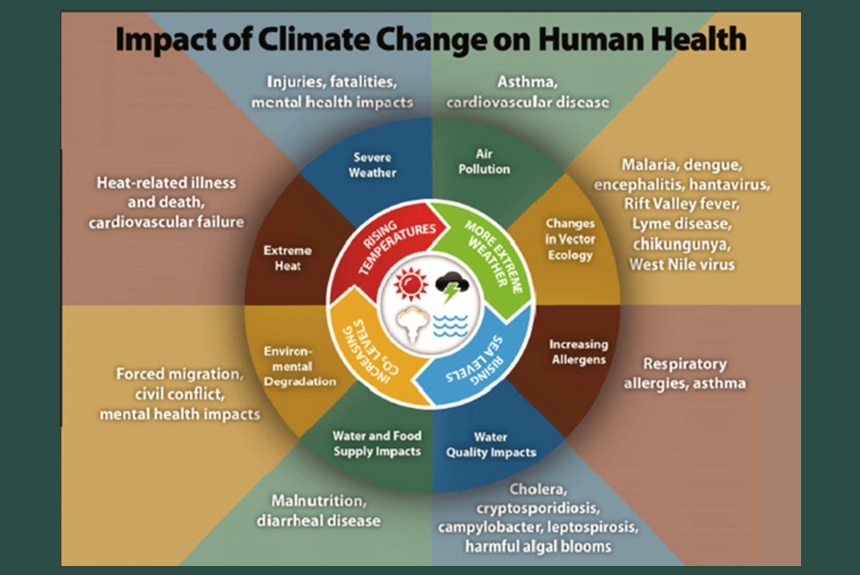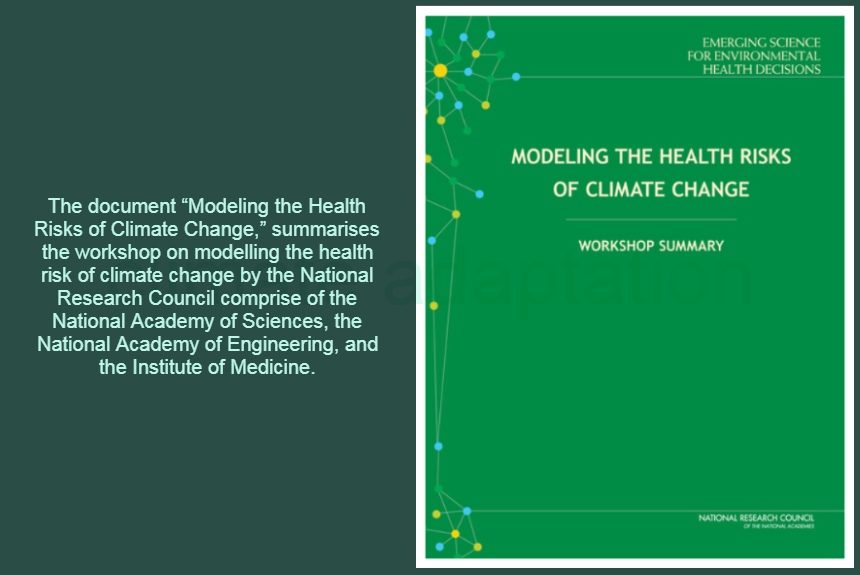The document “Modeling the Health Risks of Climate Change,” summarises the workshop on modelling the health risk of climate change by the National Research Council comprise of the National Academy of Sciences, the National Academy of Engineering, and the Institute of Medicine.
It discusses the health risks that climate change poses, and what scientists know so far and why they come up with models, the status, challenges, and opportunities of modelling health risks, applying systems thinking into models, and the way forward for health models.
The primary indication of climate change in the environment is the “higher CO2 concentration, increasing high temperatures, rising sea-levels, and increasing severity of extreme weather phenomena such as hurricanes”, John Balbus of the US National Institute of Environmental Health Sciences says when describing climate change indicators and its connections to health outcomes.
Higher temperatures may give rise to waterborne and vector-borne diseases because of the proliferation of rodents, deer, and ticks. While severe storms and hurricanes can overwhelm the health systems, affecting the elderly and those with chronic medical conditions more than the rest of the population according to the publication.
The Impact of Climate Change on Human Health Diagram
The diagram below, taken from chapter two of the book, provides a clear illustration of the impact of climate change on human health:
The inner-circle represents the physical environment. The first ring illustrates the four manifestations of climate change or climate drivers: increasing CO2 concentrations in the atmosphere, rising temperatures, rising sea levels, and more extreme weather.
These four climate drivers can act through natural and human systems (2nd ring) – including infrastructure, to cause conditions such as changes in vector ecology, increasing allergies, air pollution, severe weather etc. which may give rise to health and social effects.

Why model the health risk of climate change?
The main answer is that health is essential in inspiring people to act on climate change. Another use of models is to inform climate services that will guide people and institutions in their actions and decisions.
The book enumerates the purpose or goals of scientist for modelling health risk posed by climate change:
- “To understand exposure-response relationships, such as the health effects of heavy precipitation.
- To investigate the future based on what is known about current exposure-response relationships.
- To develop better early warning systems, which are not yet designed to address what may happen in a changing climate, and
- To assess the costs and benefits of health risks climate change or climate adaptation policies.”
In the concluding chapter discussed the way forward for researchers with their work in modelling the health risks from climate change. Speakers and panellists from the workshops offered a variety of answers, including thoughts on model complexity and context, new paradigms, time scales, decision-making needs, and communications.
“Modelers need to address complexity both by defining the task at hand and by acknowledging climate change in the context of other drivers of health outcomes. It is important to know that climate change “may have the capacity to influence only one or a few of the factors…but not all of them”.
For instance, in unexpected infectious diseases outbreaks and pandemics, researchers have identified three drivers involved. These are globalization and environmental change, social and demographic change, and public-health systems”. In this case, “climate change should be considered within the broader context of other health drivers”.
The book provides useful and practical information for everyone and every sector in the community as climate change is affecting us all. From a health perspective, extreme events and the changing weather patterns can alter temperature and moisture levels that can contribute to the spread of diseases and cause adverse health outcomes like heatstroke, for example.
The resulting spread of diseases and illnesses would be more disastrous in poorer countries without adequate health systems and resources to help them respond and recover. Infections can also rapidly spread to communities without proper sewer systems and waste disposal facilities.
Health risk models can therefore prevent disasters and worst-case scenarios through early warning systems, improved policies to respond to disasters and emergencies which taken together can improve a community’s resilience and strengthen climate adaptation efforts.
To read the entire publication, click on the link below:
Source
National Research Council. 2015. Modeling of the Health Risks of Climate Change: Workshop Summary. Washington, DC: The National Academies Press. https://doi.org/10.17226/21705



Leave a Reply